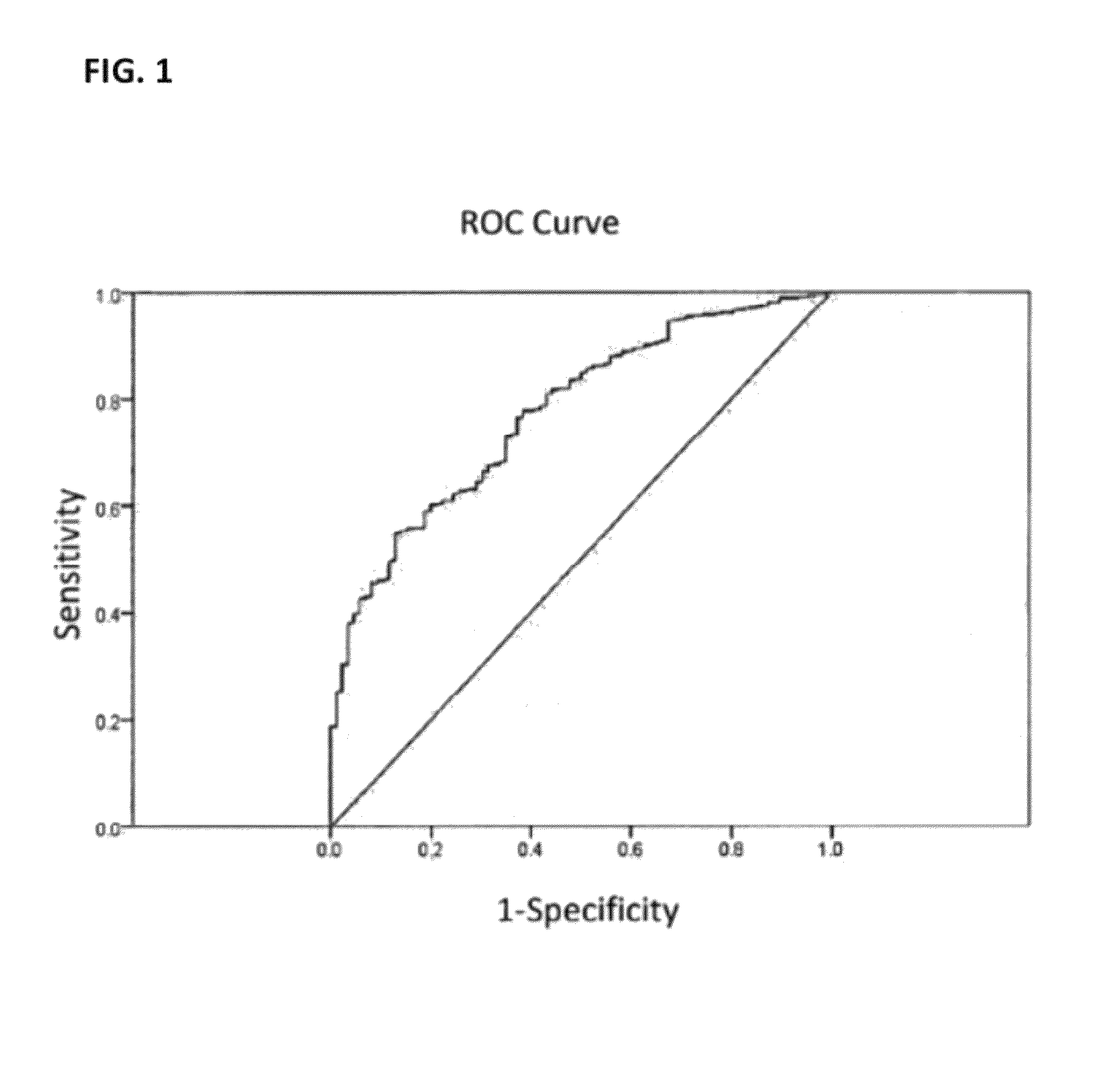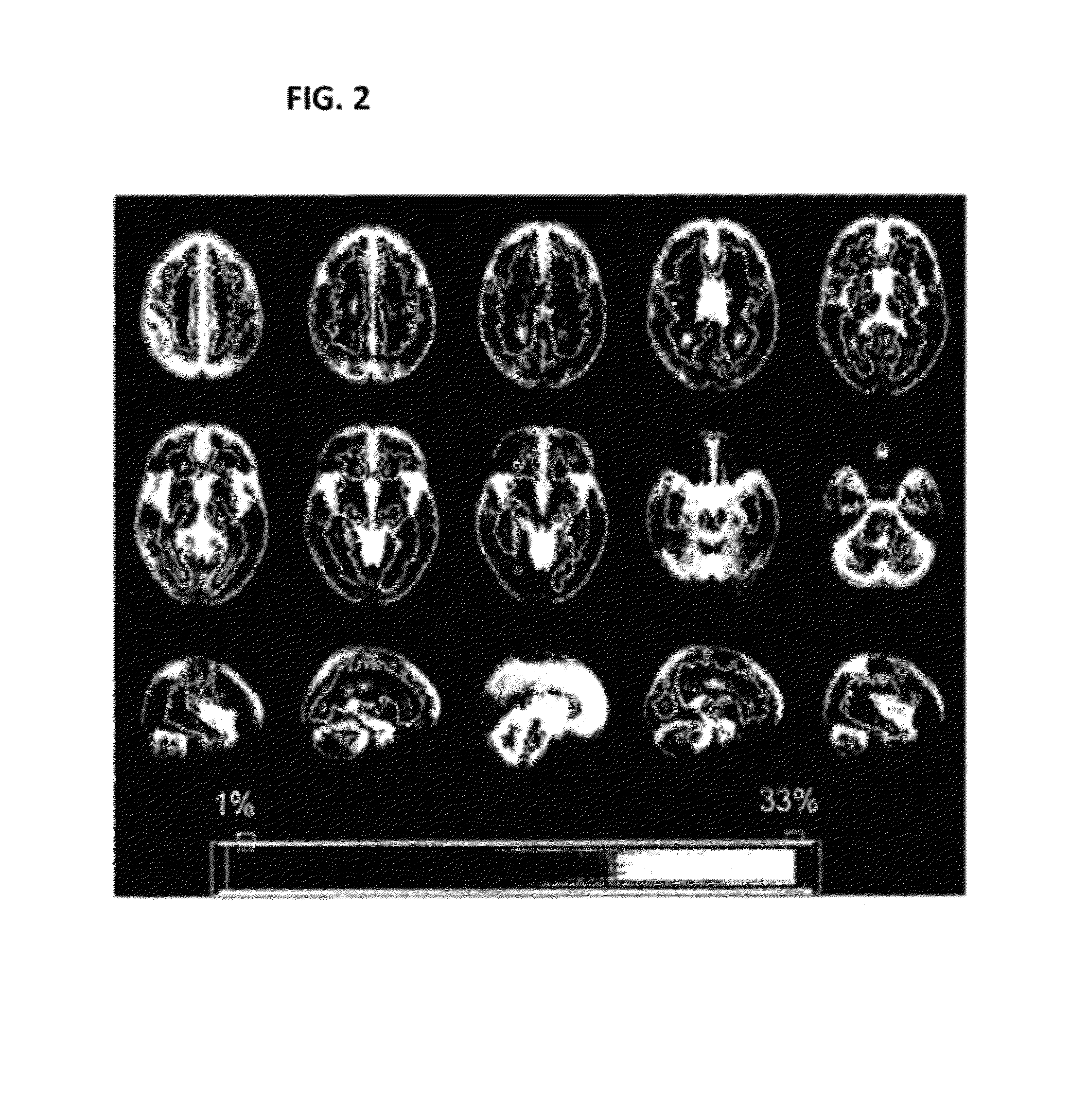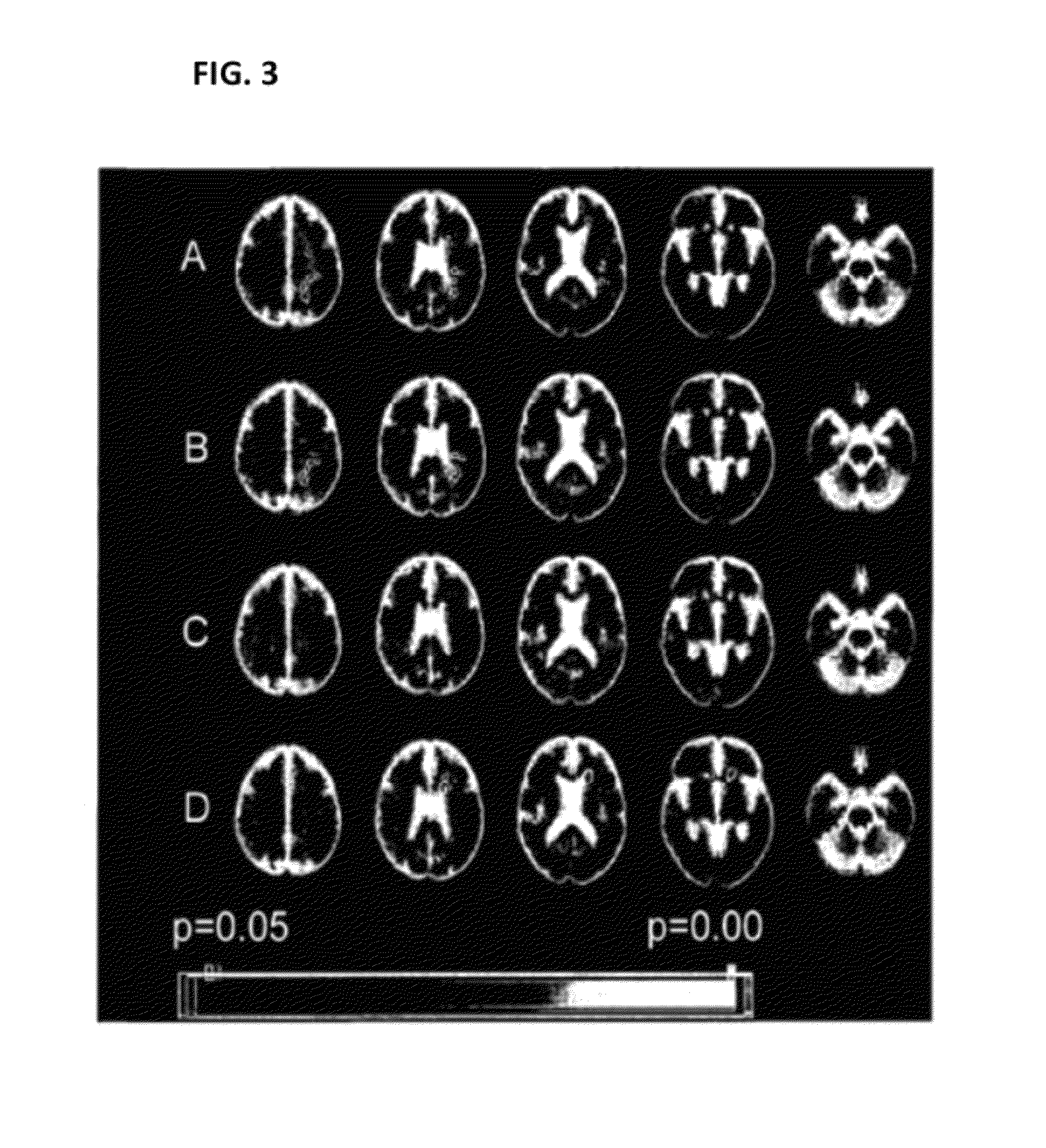Genotyping tool for improving the prognostic and clinical management of MS patients
a gene-based and clinical technology, applied in the micro field, can solve the problems of no treatment that will cure ms and reduce the progression rate of the diseas
- Summary
- Abstract
- Description
- Claims
- Application Information
AI Technical Summary
Problems solved by technology
Method used
Image
Examples
example 1
Identification of Polymorphisms Associated with Increased MSSS Score
[0180]The invention presents a model for predicting the probability of having a stronger disability, as measured by the MSSS scale, thus allowing differential treatment management for a given patient. This model was obtained from the analysis of 605 MS patients. The invention evaluates differences between patients that have an MSSS score of less than 2.5 versus patients that have an MSSS score of 2.5 or greater.
[0181]Table 3 (shown below) shows the six SNPs (rs876493, rs1137933, rs1318, rs2069763, rs2107538 and 2073 Intron2 C / T (rs423904)) with the associated genotypes and the three clinical variables (age at onset, gender and onset type) and the associated levels, together with their significance (Sig.), the coefficients in the model (B) and their odds ratios (OR) with lower and upper bound confidence intervals (I.C 95.0% for OR) used to compute the model for the prediction of the MSSS<2.5 versus≧2.5 phenotype. Thi...
example 2
Identification of SNPs Associated with T2 Brain Lesions
[0190]In order to determine whether certain SNPs are associated with increasing size and distribution of T2 brain lesions, analysis was performed on a group of 208 MS patients with MRI data collected. The MRI data show spatial distribution of T2 brain lesions. FIG. 2 shows lesion frequency across the patient sample.
[0191]FIG. 3 shows maps of clusterwise (t=2) associations of lesion presence with genotype, on a background of the common brain image. The cluster colour bar indicates clusterwise p-value, with the range indicated by the colour bar; only clusters with p<0.05 are shown. These data have been correlated to genotype data. The results show significant associations for four SNPs to brain lesions. A: rs2213584 (HLA-DRA gene); B: rs2227139 (HLA-DRA gene); C: rs2076530 (BTNL2 gene); D: rs876493 (PNMT gene).
example 2a
Identification of SNPs Associated with T2 Brain Lesions
[0192]Further investigation was carried out essentially as described in Example 2. Additionally, lesions were manually outlined on Magnetic Resonance Imaging scans and binary lesion masks were produced and registered to a common space. Using Randomise software, the lesion masks were related to genotype using a voxelwise nonparametric General Linear Model approach, followed by clusterwise analysis. The results show significant associations for eight SNPs to brain lesions: rs9808753 (IFNGR2 gene), rs2074897 (NDUFS7 gene), rs762550 (CRYAB gene), rs2076530 (BTNL2 gene), rs2234978 (FAS gene), rs3781202 (FAS gene), rs2107538 (CCL5 gene), rs659366 (UCP2 gene).
PUM
| Property | Measurement | Unit |
|---|---|---|
| thicknesses | aaaaa | aaaaa |
| thicknesses | aaaaa | aaaaa |
| slice-thickness | aaaaa | aaaaa |
Abstract
Description
Claims
Application Information
 Login to View More
Login to View More - R&D
- Intellectual Property
- Life Sciences
- Materials
- Tech Scout
- Unparalleled Data Quality
- Higher Quality Content
- 60% Fewer Hallucinations
Browse by: Latest US Patents, China's latest patents, Technical Efficacy Thesaurus, Application Domain, Technology Topic, Popular Technical Reports.
© 2025 PatSnap. All rights reserved.Legal|Privacy policy|Modern Slavery Act Transparency Statement|Sitemap|About US| Contact US: help@patsnap.com



